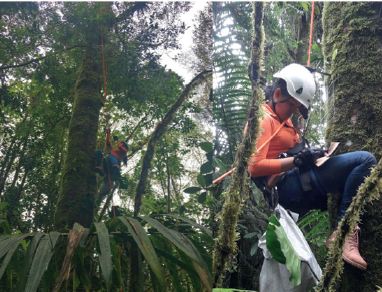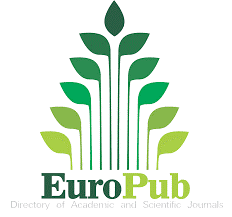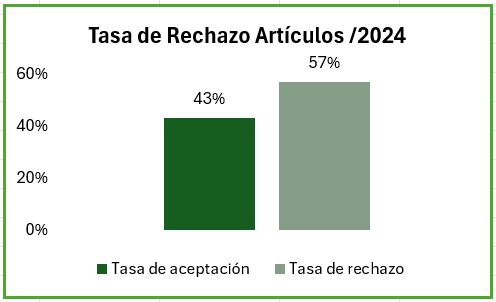Métodos de muestreo y colección de briofitos y líquenes en bosques neotropicales-Ecuador
DOI:
https://doi.org/10.54753/blc.v15i1.2299Palabras clave:
Colección, muestreo, diversidad, ecología, briófitos, líquenesResumen
Los briófitos y líquenes presentan una alta diversidad a nivel global con un aproximado de 20000 especies y para Ecuador con 1700 y 2500 especies, respectivamente. Estos dos grupos son conocidos como bioindicadores de cambios ambientales, debido a que son organismos poiquilohídricos, ya que dependen de condiciones externas de humedad y temperatura. Los briofitos y líquenes pueden crecer en diferentes ecosistemas como bosques montanos, bosques secos, bosques amazónicos, matorrales y páramos sobre corteza de árboles, suelo, rocas y en hojas. Por ello, se presenta un protocolo de muestreo para estudios de diversidad y ecológicos, así como también el proceso desde colección hasta el almacenamiento de las muestras en herbarios. Estos protocolos estandarizados y muestreos aplicados presentados aquí son los adoptados por investigadores del Herbario HUTPL y que pueden servir de guía para realizar estudios a nivel local y regional en diferentes tipos de bosques.Citas
Alvarenga, L. D. P., & Pôrto, K. C. (2007). Patch size and isolation effects on epiphytic and epiphyllous bryophytes in the fragmented Brazilian Atlantic forest. Biological conservation, 134(3), 415-427.
Benavides, J. C., & Sastre-De Jesús, I. (2011). Diversity and rarity of epiphyllous bryophytes in a superhumid tropical lowland forest of Chocó-Colombia. Cryptogamie, Bryologie, 32(2), 119-133.
Benítez, Á., Prieto, M., González, Y., & Aragón, G. (2012a). Effects of tropical montane forest disturbance on epiphytic macrolichens. Science of the Total Environment, 441, 169-175.
Benítez, Á., Aragón, G., & Prieto, M. (2019a). Lichen diversity on tree trunks in tropical dry forests is highly influenced by host tree traits. Biodiversity and Conservation, 28(11), 2909-2929.
Benítez, Á., Gradstein, S. R., Cevallos, P., Medina, J., & Aguirre, N. (2019b). Comunidades de briófitos terrestres relacionados con factores climáticos y topográficos en un páramo del sur de Ecuador. Caldasia, 41(2), 370-379.
Benitez, A., Gradstein, S. R., Prieto, M., Aragón, G., León-Yánez, S., Moscoso, S., & Burghardt, M. (2012b). Additions to the bryophyte flora of Ecuador 2. Tropical bryology, 34, 99-106.
Benítez, Á., Jaramillo, E., Yangua-Solano, E., & Greeney, H. F. (2023). Bryophytes Present in the Nests of Birds in Yanayacu Biological Station, Ecuador. Diversity, 15(11), 1123.
Benítez, Á., Prieto, M., & Aragón, G. (2015). Large trees and dense canopies: key factors for maintaining high epiphytic diversity on trunk bases (bryophytes and lichens) in tropical montane forests. Forestry: An International Journal of Forest Research, 88(5), 521-527.
Castillo-Monroy, A. P., Benítez, Á., Reyes-Bueno, F., Donoso, D. A., & Cueva, A. (2016). Biocrust structure responds to soil variables along a tropical scrubland elevation gradient. Journal of Arid Environments, 124, 31-38.
Chuquimarca, L., Gaona, F. P., Iñiguez-Armijos, C., & Benítez, Á. (2019). Lichen responses to disturbance: clues for biomonitoring land-use effects on riparian Andean ecosystems. Diversity, 11(5), 73.
Churchill, S. P., Griffin, D., & Muñoz, J. (2000). A checklist of the mosses of the tropical Andean countries (Vol. 17). Editorial CSIC-CSIC Press.
Cox, C. J., Goffinet, B., Wickett, N. J., Boles, S. B., & Shaw, A. J. (2010). Moss diversity: a molecular phylogenetic analysis of genera. Phytotaxa, 9(1), 175-195.
Crosby, M. R. (1999). A checklist of the mosses. Missouri Botanical Garden.
Díaz, J., Montaño, L., Salinas, P., & Benítez, Á. (2021). Epiphytic cryptogams as bioindicators of air quality in a tropical Andean city. Sustainability, 13(20): 11218.
Feuerer, T., & Hawksworth, D. L. (2007). Biodiversity of lichens, including a world-wide analysis of checklist data based on Takhtajan’s floristic regions. Biodiversity and conservation, 16(1), 85-98.
González, Y., Aragón, G., Benítez, A., & Prieto, M. (2017). Changes in soil cryptogamic communities in tropical Ecuadorean páramos. Community Ecology, 18, 11-20.
Gradstein, S. R. (2021). The liverworts and hornworts of Colombia and Ecuador.
Gradstein, S. R., Churchill, S. P., & Salazar-Allen, N. (2001). Guide to the bryophytes of tropical America. Memoirs-New York Botanical Garden.
Gradstein, S. R., Hietz, P., Lücking, R., Lücking, A., Sipman, H. J. M., Vester, H. F. M., ... & Gardette, E. (1996). How to sample the epiphytic diversity of tropical rain forests.
Gradstein, S. R., Wilson, R., Mohamed, H., Baki, B. B., Nasrulhaq-Boyce, A., & Lee, P. K. L. (2008). Protonemal neoteny in bryophytes. Bryology in the new millennium. Kuala Lumpur: University of Malaya, 1-11.
Hauck, M. (2009). Global warming and alternative causes of decline in arctic‐alpine and boreal‐montane lichens in North‐Western Central Europe. Global Change Biology, 15(11), 2653-2661.
Holz, I., & Gradstein, R. S. (2005). Cryptogamic epiphytes in primary and recovering upper montane oak forests of Costa Rica–species richness, community composition and ecology. Plant ecology, 178, 89-109.
Hylander, K., Nemomissa, S. y Enkosa, W. (2013). Edge effects on understory epiphytic ferns and epiphyllous bryophytes in moist afromontane forests of Ethiopia. Polish Botanical Journal, 58(2): 555-563.
Jiang, Y. B., & Shao, X. M. (2016). Diversity and distribution pattern of epiphyllous liverworts and its ecological determinants. Chinese Journal of Plant Ecology, 40(5), 523.
Johansson, D. (1974). Ecology of vascular epiphytes in West African rain forest (Doctoral dissertation, Sv. växtgeografiska sällsk.).
Krömer, T., & Gradstein, S. R. (2016). Vascular epiphytes. Core Standardized MethodS, 24, 26.
León-Yánez, S., Gradstein, S., & Wegner, C. (2006). Catálogo de Hepáticas (Marchantiophyta) y Antoceros (Anthocerothophyta) del Ecuador. Herbario QCA, Pontificia Universidad Católica del Ecuador. Quito, Ecuador.
Lücking, R. (2008). Foliicolous lichens as model organisms to study tropical rainforest ecology: background, data, and protocols. Sauteria, 15: 335-362.
Malombe, I., Matheka, K. W., Pócs, T., & Patiño, J. (2016). Edge effect on epiphyllous bryophytes in Taita Hills fragmented afromontane forests. Journal of Bryology, 38(1), 33-46.
Mandl, N. A., Kessler, M., & Robbert Gradstein, S. (2009). Effects of environmental heterogeneity on species diversity and composition of terrestrial bryophyte assemblages in tropical montane forests of southern Ecuador. Plant Ecology & Diversity, 2(3), 313-321.
Monge-Nájera, J. (1989). The relationship of epiphyllous liverworts with leaf characteristics and light in Monte Verde, Costa Rica. Cryptogamie, Bryologie, 10(4), 345-352.
Morales, T., & Moreno, E. (2010). Contribución al conocimiento de los briófitos epífilos de Venezuela. Ernstia, 20(1), 47-70.
Nadkarni, N. M., & Matelson, T. J. (1989). Bird use of epiphyte resources in neotropical trees. The Condor, 91(4), 891-907.
Normann, F., Weigelt, P., Gehrig-Downie, C., Gradstein, S. R., Sipman, H. J., Obregon, A., & Bendix, J. (2010). Diversity and vertical distribution of epiphytic macrolichens in lowland rain forest and lowland cloud forest of French Guiana. Ecological Indicators, 10(6), 1111-1118.
Nöske, N. M., Hilt, N., Werner, F. A., Brehm, G., Fiedler, K., Sipman, H. J., & Gradstein, S. R. (2008). Disturbance effects on diversity of epiphytes and moths in a montane forest in Ecuador. Basic and Applied Ecology, 9(1), 4-12.
Ochoa Jiménez, D. A., Cueva Agila, A., Prieto, M., Aragon, G., & Benitez, A. (2015). Changes in the epiphytic lichen composition related with air quality in the city of Loja (Ecuador). Caldasia.
Patiño, J., & Vanderpoorten, A. (2018). Bryophyte biogeography. Critical Reviews in Plant Sciences, 37(2-3), 175-209.
Pócs, T. (1996). Epiphyllous liverwort diversity at worldwide level and its threat and conservation. Anales del Instituto de Biología Serie Botánica, 67(001).
Ruiz, L., Carrión-Paladines, V., Vega, M., López, F., & Benítez, Á. (2023). Biological Crust Diversity Related to Elevation and Soil Properties at Local Scale in a Montane Scrub of Ecuador. Journal of Fungi, 9(3), 386.
Salinas, P., Mazón, M., Carrión-Paladines, V., Cumbicus, N., Guzmán, P., Giordani, P., & Benítez, Á. (2022). Forest Ecosystems. Forest, 9, 100061.
Smith, R. M., Young, M. R., & Marquiss, M. (2001). Bryophyte use by an insect herbivore: does the crane‐fly Tipula montana select food to maximise growth?. Ecological Entomology, 26(1), 83-90.
Söderström, L., Hagborg, A., & Von Konrat, M. (2016). Early land plants today: index of liverworts & hornworts 2013–2014. Phytotaxa, 269(3), 133-185.
Spribille, T., Tuovinen, V., Resl, P., Vanderpool, D., Wolinski, H., Aime, M. C., ... & McCutcheon, J. P. (2016). Basidiomycete yeasts in the cortex of ascomycete macrolichens. Science, 353(6298), 488-492.
Villarreal, J. C., Cargill, D. C., Hagborg, A., Soderstrom, L., & Renzaglia, K. S. (2010). A synthesis of hornwort diversity: Patterns, causes and future work. Phytotaxa, 150-166.
Von Konrat, M., Soderstrom, L., Renner, M. A., Hagborg, A., Briscoe, L., & Engel, J. J. (2010). Early land plants today (ELPT): how many liverwort species are there?. Phytotaxa, 9(1), 22-40.
Yánez-Ayabaca, A., Benítez, Á., Molina, R. B., Naranjo, D., Etayo, J., Prieto, M., ... & Bungartz, F. (2023). Towards a dynamic checklist of lichen-forming, lichenicolous and allied fungi of Ecuador–using the Consortium of Lichen Herbaria to manage fungal biodiversity in a megadiverse country. The Lichenologist, 55(5), 203-222.
Yangua-Solano, E., Carrión-Paladines, V., & Benítez, Á. (2023). Effects of fire on pyrodiversity of terricolous non-tracheophytes photoautotrophs in a páramo of Southern Ecuador. Diversity, 15(12), 1176.
Zartman, C. E., & Nascimento, H. E. (2006). Are habitat-tracking metacommunities dispersal limited? Inferences from abundance-occupancy patterns of epiphylls in Amazonian forest fragments. Biological conservation, 127(1), 46-54.

Publicado
Cómo citar
Número
Sección
Licencia
Derechos de autor 2025 Bosques Latitud Cero

Esta obra está bajo una licencia internacional Creative Commons Atribución-NoComercial-CompartirIgual 4.0.
Esta obra se publica bajo la licencia Creative Commons Atribución-NoComercial-CompartirIgual 4.0 Internacional (CC BY-NC-SA 4.0). Esto significa que los usuarios pueden copiar, distribuir y adaptar el contenido, siempre que se otorgue el crédito adecuado a los autores y a la revista. No se permite el uso comercial del material. Además, cualquier obra derivada debe distribuirse bajo la misma licencia. Esta licencia garantiza el acceso abierto al conocimiento, promoviendo la difusión y reutilización de los trabajos publicados sin fines de lucro, respetando la autoría y asegurando la libre circulación del contenido en términos equitativos.





























